The Willamette National Forest is an adventure destination you don’t want to miss. With its tall jagged peaks, waterfalls, lakes, and canopy of various pine trees, the forest feels like you’ve walked into a fairytale land. When summer comes, the sights of wildflowers and greenery will encompass the landscape.
There are seven major peaks, miles and miles of winding rivers, and hundreds of wildlife species. As the largest forest in Oregon, the Willamette National Forest is a must-see destination for those seeking an epic adventure.
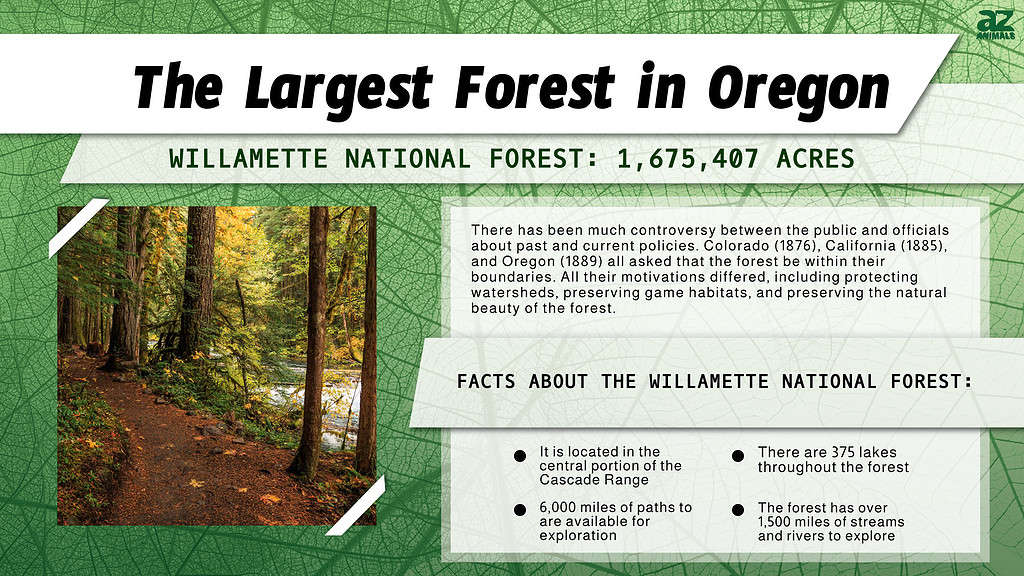
The Largest Forest in Oregon: Willamette National Forest
Located right at the center of Oregon, the Willamette National Forest contains a massive expanse of lush greenery and untouched terrain that seems to go on forever. The Willamette National Forest is the largest forest in Oregon, with 1,675,407 acres stretching as far as the eye can see.
The mountain peaks are remarkable natural wonders that dominate the landscape and capture the imagination. There are seven peaks of the Cascades, including:
- Mount Jefferson
- Three Fingered Jack
- Mount Washington
- Diamond Peak
- North Sister
- Middle Sister
- South Sister
The North, Middle, and South Sisters are Oregon’s third to fifth-largest peaks and the second-largest wilderness area. Each peak stretches over 10,000 feet in the sky, making it a popular destination for mountain climbing.
More than 110 miles of forest are in Lane County, in Western Oregon. Many communities receive irrigation and drinking water from the snow-capped mountaintops. In addition, there are 375 lakes throughout the forest and more than 1,500 miles of streams and rivers to explore. Travel along the 6,000 miles of paths to explore the wilderness night or day.
The Willamette National Forest is essential to the ecosystem and health of our planet. They can help raise awareness about the importance of protecting these ecosystems and supporting their conservation efforts.
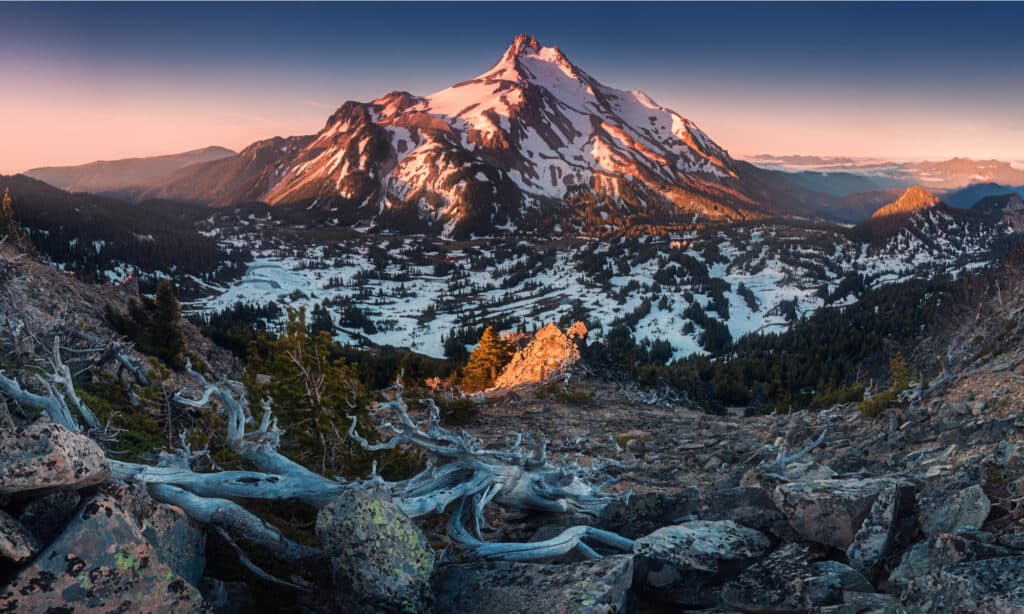
Mount Jefferson is part of the Cascade Range and the second-highest mountain in Oregon.
©Michal Balada/Shutterstock.com
History of Willamette National Forest
There has been much controversy between the public and officials about past and current policies. Colorado (1876), California (1885), and Oregon (1889) all asked that the forest be within their boundaries. All their motivations differed, including protecting watersheds, preserving game habitats, and preserving the natural beauty of the forest.
From 1893-1897, Congress decided on various bills, all of which failed, that would allow the reserve to get used. However, displeasure continued in Oregon as sheepmen because their flocks would spend the winter in the eastern Oregon valleys. Then, after the lambing season, they would trail their flocks to the mountains. These sheepmen established driveways in the Sisters and Cascades area.
This is significant as the shepherds were excluded from the Cascade Range Forest Reserve and considered trespassers. By 1894, the government banned pasturing and herding sheep and other livestock. A resolution finally came into effect in June 1896, where some sections of the reserve would allow settlement and grazing.
The Sundry Civil Appropriations Act of June 1897 ensured that the forest had the appropriate funds and management to ensure the continuous timber supply and maintenance of water sources. This led to establishing reserve boundaries, authorizing settlers within the reserve, and the waters used for milling, mining, irrigation, and many more.
From 1945 to 1970, the reserve made many changes to its policies and increased recreational uses of the forest with campground construction, timber sales, and wildlife management and preservation. By the 1970s and 1980s, controversy surrounded timber sales, which was resolved with the Willamette National Forest Land Management Plan in 1990.
Willamette National Forest’s history is in-depth, and many changes occurred along the way. Today, it is a magnificent location to explore nature’s beauty while providing natural resources to the surrounding communities.
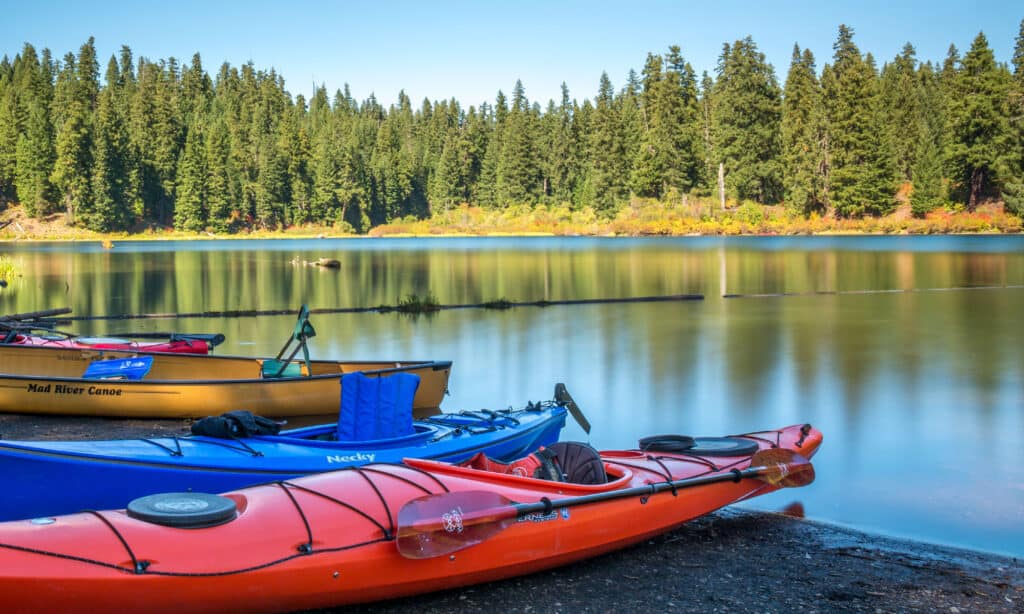
The Willamette National Forest provides the surrounding communities with clean water, natural resources, and recreational activities.
©iStock.com/mattalberts
Recreation at Willamette National Forest
The Willamette National Forest is filled with wonderous fauna and flora. The forest is open year-round, with abundant trails, meadows, waterfalls, and mountain peaks to discover.
Camping
Camping at Willamette National Forest is an excellent way to disconnect from the hustle and bustle of your daily life. The forest has more than 70 campgrounds accommodating every type of camper. So whether you want to rent a cabin, camp in an RV, group camping, or disperse camping, there is something for everyone.
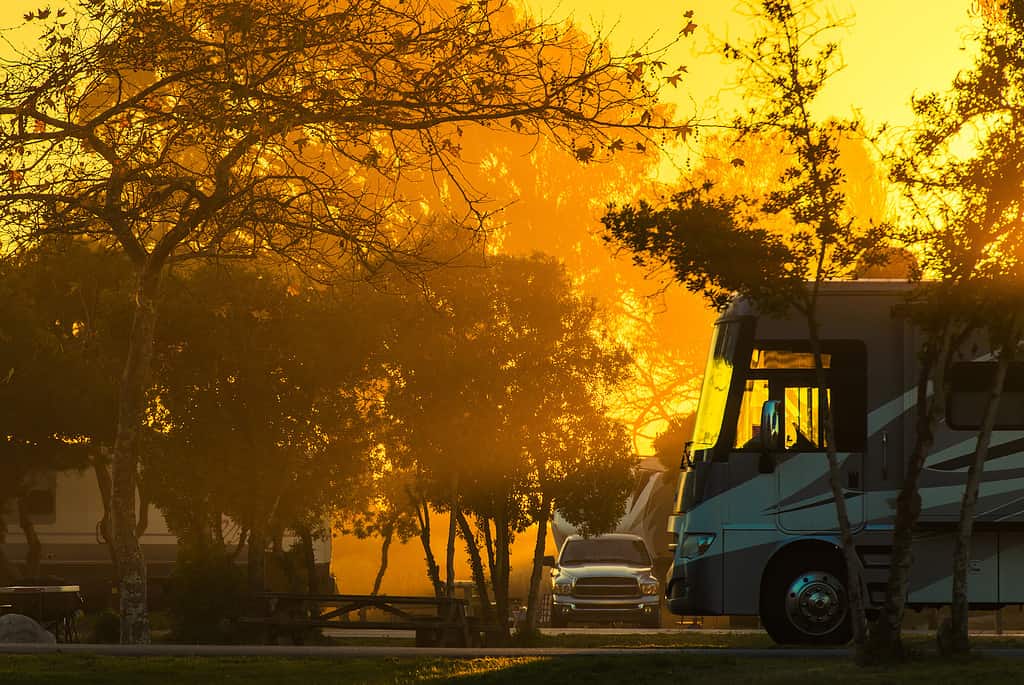
Camp in one of the 70 campgrounds throughout the Willamette National Forest and hike some of the 1,700 miles of hiking trails.
©iStock.com/welcomia
Hiking
Take a hike through Iron Mountain Trail and find beautiful meadows blanketed with wildflowers and springs as you hike to the viewing area. You can also take a 5.8-mile hike at Clear Lake Loop and keep your eyes on the sky to spot bald eagles who nest in the area. If you’re looking for a truly magical scene, hike the Water Falls Loop Trail to the Koosah Falls viewpoint and watch the water cascading down the cliff.
There are 1,700 miles of hiking trails, each with unique characteristics. Your options are endless!
Mountain Biking
Mountain biking can provide a sense of adventure and excitement as riders explore new trails and conquer challenging terrain. What better way to spend your trip to the largest forest in Oregon than mountain biking some of the most popular trails:
Skiing
Since Willamette National Forest is open all year, you can opt for cross-country skiing in the summer months at Santiam Pass. You might even hop on a snowmobile or go dog sledding for an adventure of a lifetime. The Hoodoo Ski Area and Ray Benson Sno-Park are beautiful lodges with all the amenities for a full-service winter vacation.
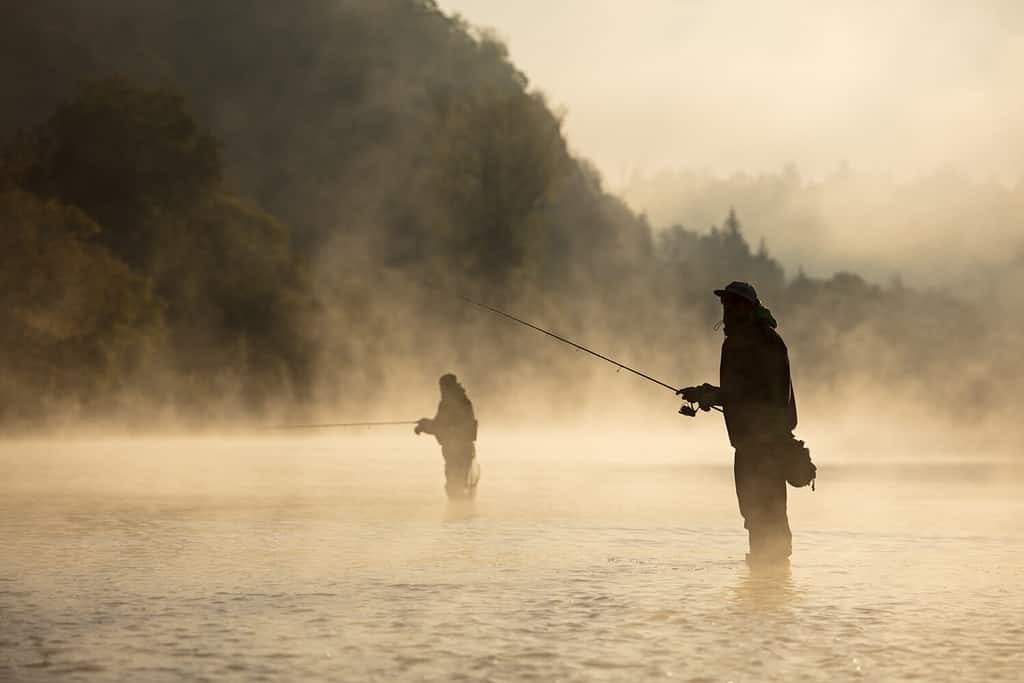
Fly fishing is a popular sport at Willamette National Forest.
©Lukas Gojda/Shutterstock.com
Fishing and Hunting
Willamette National Forest is every fisherman’s dream! There are more than 300 species of animals and fish, including Chinook salmon, rainbow trout, largemouth bass, cutthroat trout, and many others. So fish in the still waters of one of the many ponds, or take the Greenwaters Trail to a popular fly fishing spot at Middle Fork Willamette River.
Hunting can be an adventurous and challenging activity that requires skill, knowledge, and patience. Elk or deer? This is the place to be if you want a hunting adventure. Contact the ranger’s office, follow all fishing and hunting regulations, and get the necessary permits before visiting the forest.
Wildlife in Willamette National Forest
The pine trees engulf the landscape, but what lies within? From the smallest of insects and birds to deer and bears, Willamette National Forest is a go-to vacation destination. So let’s discover what you might find beneath the canopy of Douglas fir trees.
Deer
Spring through summer is an excellent time to spot deer and their fawns roaming the thick forest, such as mule deer and Roosevelt elk are commonly spotted here. You might even spot black-tailed deer grazing or eating some delicious berries.
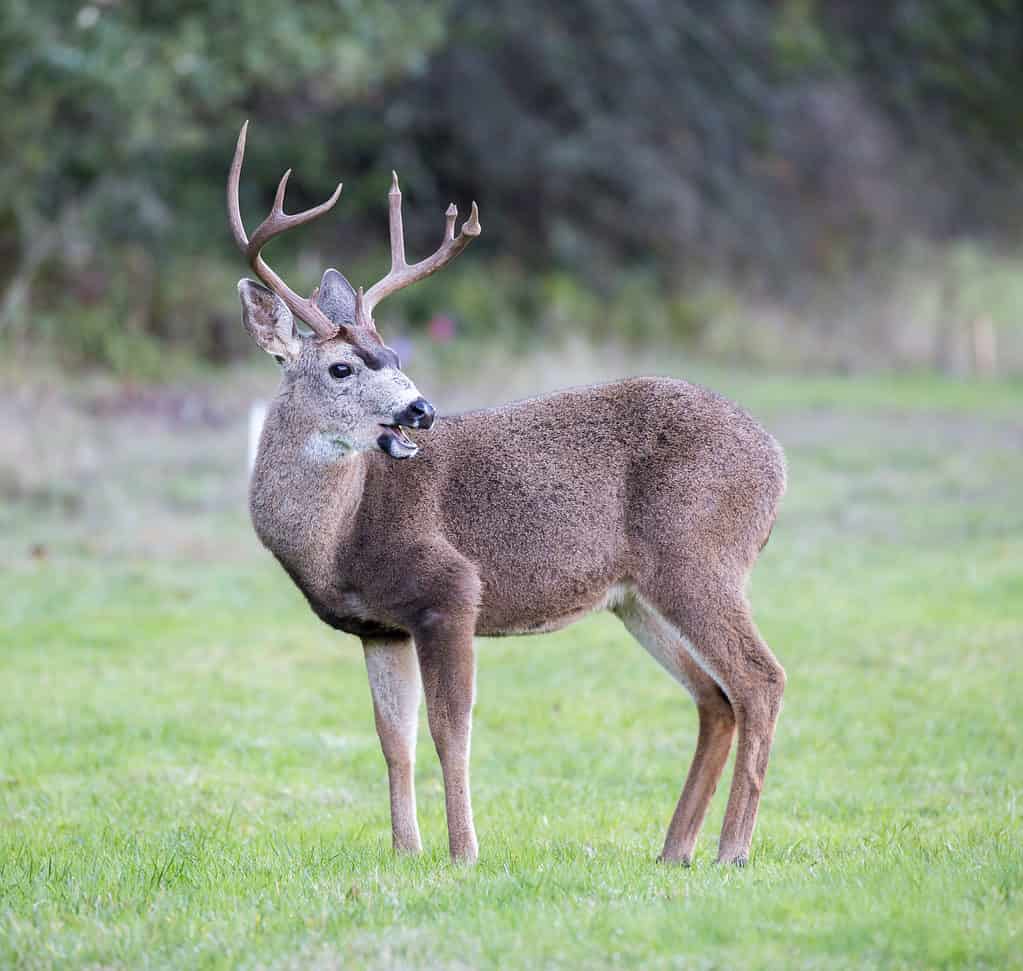
Black-tailed deer are most active at dusk and dawn.
©yhelfman/Shutterstock.com
Black Bears
Black bears are shy animals and will likely run away if they see you. They can grow 5-6 feet tall and weigh 200-600 pounds. Always practice caution because they can attack when they feel threatened or provoked. Keep your distance and enjoy the beautiful sight from a distance.
Cougars
Did you know they are solitary animals that live in the mountains? Cougars are one of many mountain lions that you can come across at Willamette National Forest. If you spot one dining on a deer, keep moving, as younger cougars can be more unpredictable than adults.
Birds
The forest has a diverse range of habitats for many species of birds. With more than 15 conifer species, it’s no wonder birds will make them home. Keep your ears and eyes open for the northern spotted owl or bald eagle. Seeing these rare birds is a rewarding experience, especially in their natural habitat.
Where Is the Willamette National Forest Located on a Map?
The Willamette National Forest is a captivating destination that holds within its boundaries a wealth of natural wonders and exciting outdoor opportunities. With eight wilderness areas to explore, including the renowned Three Sisters Wilderness and Mt. Jefferson Wilderness, adventurers are spoiled for choice. Backpackers and day hikers alike will find themselves drawn to the region’s diverse trails, offering breathtaking views and unforgettable experiences.
Here is The Willamette National Forest on a map:
The photo featured at the top of this post is © Michael Balada/Shutterstock.com
Thank you for reading! Have some feedback for us? Contact the AZ Animals editorial team.






